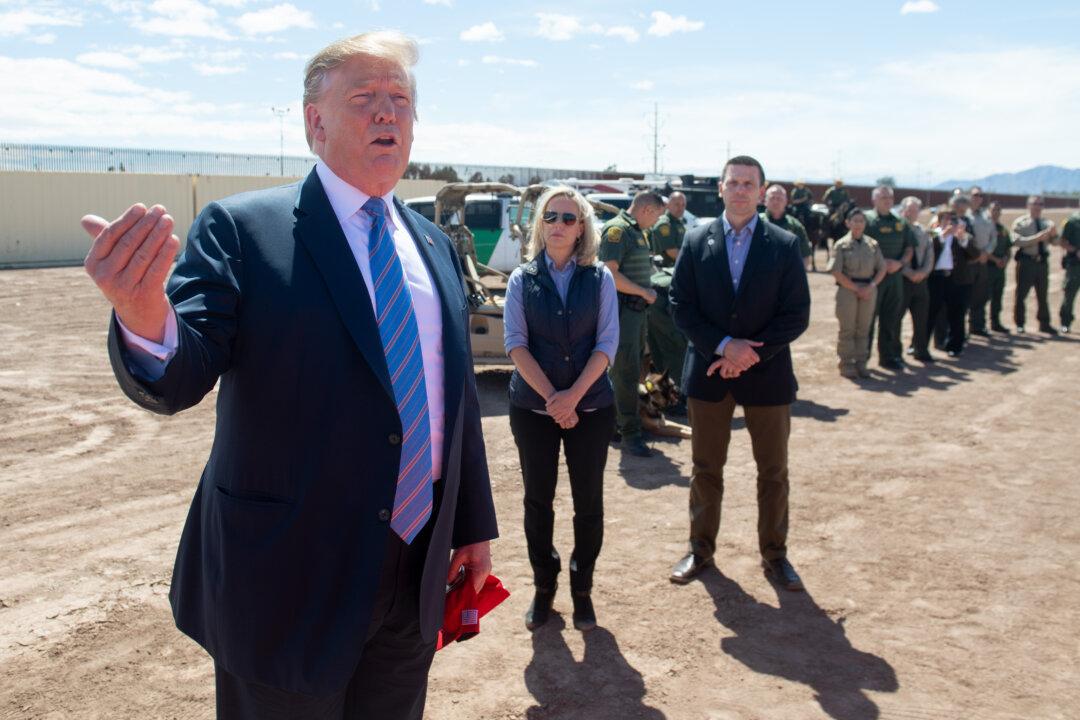President Donald Trump called on people attempting to cross the U.S.–Mexico border illegally to turn around, saying our border security and immigration system is overwhelmed by an influx of migrants from Central American countries.
“It’s a colossal surge and it’s overwhelming our immigration system, and we can’t let that happen,” Trump told a roundtable on immigration and border security in Calexico, California, on April 5.





